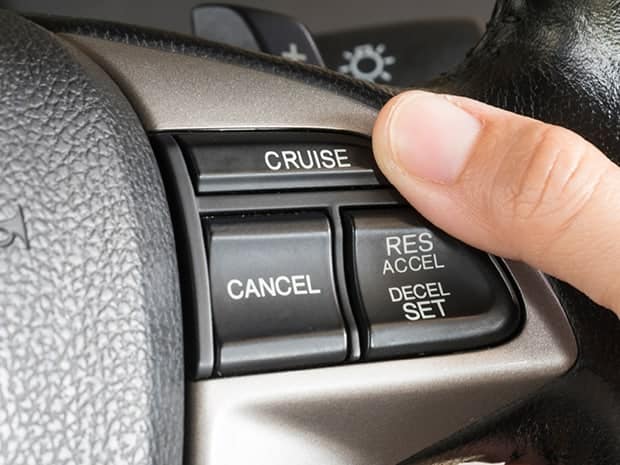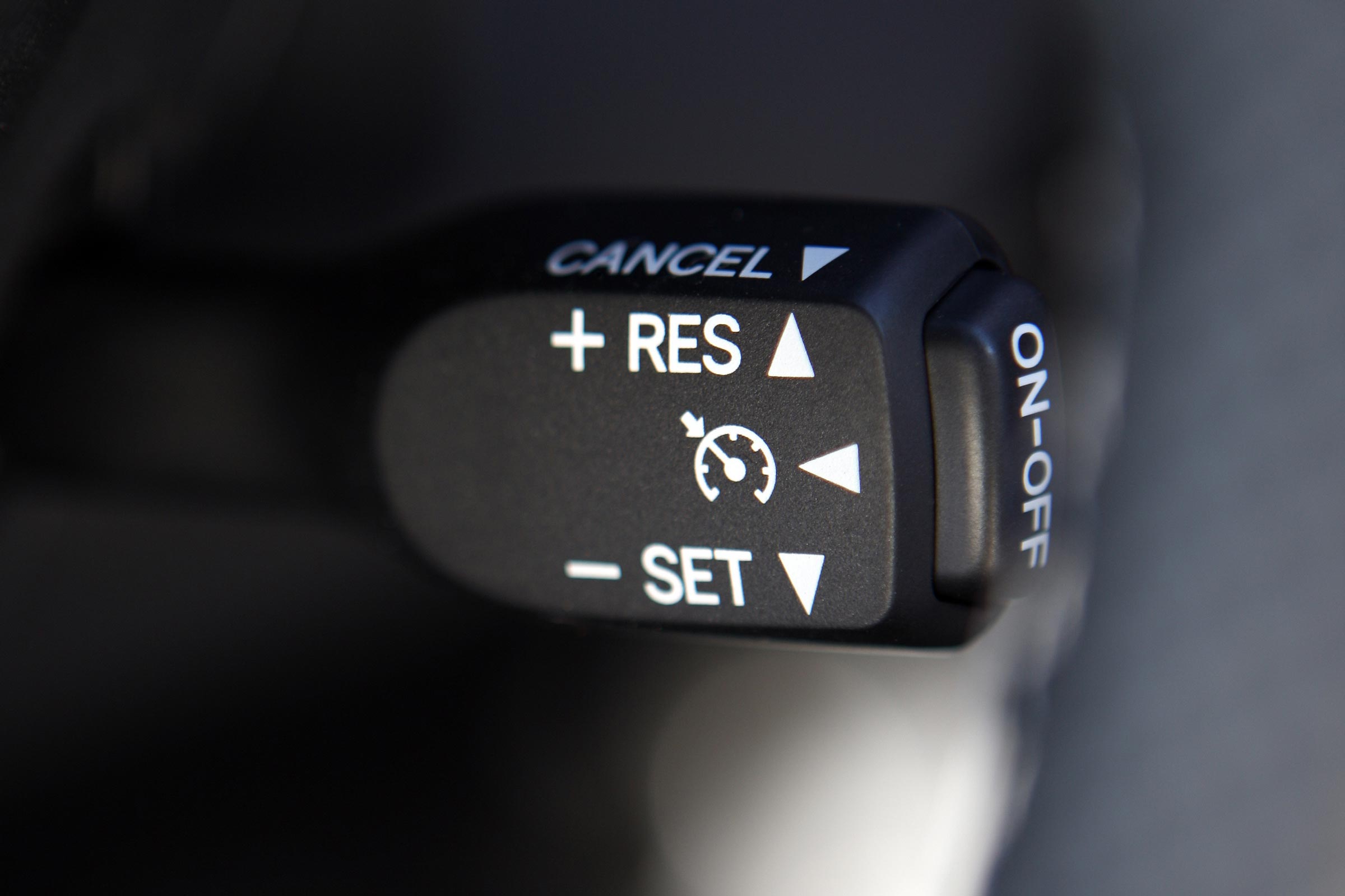Table Of Content
- How Can You Safely Jump Start a Car Without Another Vehicle? A Comprehensive Guide
- What Does the Cruise Control Symbol Look Like?
- Car Sales Are Speeding Up, But Dealers Still Have Too Much Inventory
- When Should Cruise Control Not Be Used?
- Why Use the Cruise Control System?
- Understanding the Cruise Control Symbol on Your Car Dashboard. Decoding Standard Symbols
- What is cruise control in a car? Meaning and how does it work?

Delphi's 76-GHz system can also detect objects as far away as 492 feet, and operates at speeds as low as 20 mph (32 kph). The most important input is the speed signal; the cruise control system does a lot with this signal. First, let's start with one of the most basic control systems you could have -- a proportional control.

How Can You Safely Jump Start a Car Without Another Vehicle? A Comprehensive Guide
It is a complex process to install the system in new cars as you have to fiddle with electronics, and it also requires the fitment of hardware. Moreover, if you try installing an aftermarket kit, you may void the warranty offered by the OEM (Original Equipment Manufacturer). On top of that, it is not recommended to go for an aftermarket cruise control kit as it may compromise safety. You may install an aftermarket kit if it’s an old car that does not rely on electronics to control all the engine-related functions.
Robotaxi haters in San Francisco are disabling the AVs with traffic cones - TechCrunch
Robotaxi haters in San Francisco are disabling the AVs with traffic cones.
Posted: Thu, 06 Jul 2023 07:00:00 GMT [source]
What Does the Cruise Control Symbol Look Like?
Following are the steps you need to go through to increase the cruising speed of your vehicle. One significant benefit you will get while using the cruise control system. The worst part is that you can’t even fall asleep during this long journey if you have gotten hold of the driver’s seat. Here are some of the most commonly asked questions related to cruise control in cars. Newly launched cars are equipped with cruise control except for a few entry-level models. So, instead of investing in retrofitting a system, it's better and safer to spend that money on buying a car with a built-in system.
Car Sales Are Speeding Up, But Dealers Still Have Too Much Inventory
Cruise control technology plays a vital role in the development of autonomous vehicles, or self-driving cars. In autonomous vehicles, cruise control systems work together with other advanced driver assistance systems (ADAS) to enable the vehicle to operate without direct driver input. These systems include lane-keeping assist, automatic emergency braking, and collision avoidance systems. The modern cruise control system comes on the engine control unit of the vehicles. As all the controls of this system feature electronic transmission, including brakes, steering, and throttle, there is no need for additional components. The only manual controls you need are buttons and the basic driver controls.
When should cruise control not be used?
However, adaptive cruise control may not work well in bad weather or protect you from sudden movements, so you will want to always keep your full attention on the road. Initially, the system used a cable to control the accelerator (throttle valve). It adjusted the vehicle's speed by engaging the throttle with the help of an actuator that is controlled by a cable. The throttle valve is responsible for the power and speed generated by the engine. So, depending on the speed set by the driver, the system automatically adjusted the throttle position.
Adaptive Cruise Control: How Does It Work? - Kelley Blue Book
Adaptive Cruise Control: How Does It Work?.
Posted: Thu, 21 Jul 2022 07:00:00 GMT [source]
When Should Cruise Control Not Be Used?
With adaptive cruise control, the vehicle will also automatically slow down and speed up to maintain a safe position in traffic. This step will vary widely based on your vehicle make and model, however, many cruise control settings are accessible from the steering wheel controls. As autonomous vehicles become more sophisticated, cruise control technology is evolving to support higher levels of automation. For example, some autonomous vehicles are equipped with advanced cruise control systems that can navigate complex traffic scenarios, merge onto highways, and even change lanes autonomously. Predictive Cruise Control is like the fortune teller of cruise control systems.
Why Use the Cruise Control System?
It is an intelligent form of cruise control that slows down and speeds up automatically to keep pace with the car in front of you. If the cruise control on your car fails to disengage when you want to slow down, slip the vehicle into neutral to disconnect drive power from the wheels, pull over, and address the situation. As mentioned, cruise control may become inconsistent in rainy, snowy, or otherwise hazardous conditions. If you must drive in this situation, it may be a better idea to do so manually.
Understanding the Cruise Control Symbol on Your Car Dashboard. Decoding Standard Symbols
Drivers set their cruising speed with a button press, and the system works the throttle automatically to maintain the desired cruising speed as evenly as possible. In some vehicles with a manual transmission, pressing the clutch pedal to shift gears turns the cruise control off, requiring an additional button press to reengage it after a gear change. Adaptive cruise control is similar to conventional cruise control in that it maintains the vehicle's pre-set speed. However, unlike conventional cruise control, this new system can automatically adjust speed in order to maintain a proper distance between vehicles in the same lane. This is achieved through a radar headway sensor, digital signal processor and longitudinal controller. If the lead vehicle slows down, or if another object is detected, the system sends a signal to the engine or braking system to decelerate.
If you experience any problems with your cruise control, it's best to have a qualified technician diagnose and repair the issue for you. Remember, these systems are here to make your drive smoother and safer, but they're not a replacement for your attention. No matter how fancy your cruise control is, these systems can be greatly influenced by external conditions like weather and traffic, and they should always be used as aids, not replacements, for attentive driving. Today, drivers can choose from a range of cruise control systems, each with its own unique features and functionalities. As we have mentioned in the benefits part, you can relax using the cruise control system while in the driver’s seat, but this doesn’t mean you can take a nap.
Many systems set the cruise control at the current speed, while others require you to manually set one. You can increase and decrease this speed as needed without interrupting the mechanism. Many cars use actuators powered by engine vacuum to open and close the throttle. These systems use a small, electronically-controlled valve to regulate the vacuum in a diaphragm. This works in a similar way to the brake booster, which provides power to your brake system.
Cruise Main is said to be beneficial for those who want to avoid getting speeding tickets and those who want to be able to drive more safely. But what are the other benefits of using the cruise main in your car? The cruise control symbol can vary depending on your car make and model, but it typically looks like a speedometer with an arrow or a car with a speedometer inside of it. Sometimes, the symbol may also have the word “Cruise” written below or beside it. Typically, the cruise control buttons can be found on the right-hand side of the steering wheel. Depending on the car, the location of the controls can vary, but the functionality of the cruise control will usually be similar across the board.
With the activated cruise control system, you can override the speed of the car by pressing the accelerator pedal. But once, you take the foot off the accelerator pedal, the cruise control reduces the speed until it reaches the last SET speed. Safely navigating certain slippery or dangerous driving conditions requires careful manual control of your vehicle’s throttle, and in these situations, you’re best to leave the cruise control off. The driver must manually bring the vehicle up to speed and use a button to set the cruise control to the current speed. While fully autonomous vehicles are still in the developmental stages, the integration of cruise control technology is a big step toward creating safer and more efficient transportation systems. So, if the car in front of you slows down, you'll need to step in and adjust your speed manually.
During cruise control, the cable is not just monitoring the car’s speed but also the power of the engine. It ensures that the engine takes in the exact amount of air required to continue cruising at the set speed. In many cars, the actuator is powered by a small electronically controlled vacuum valve instead of being controlled by a cable. The vacuum pressure holds the position of the throttle, allowing hands-free cruising of the car.


No comments:
Post a Comment